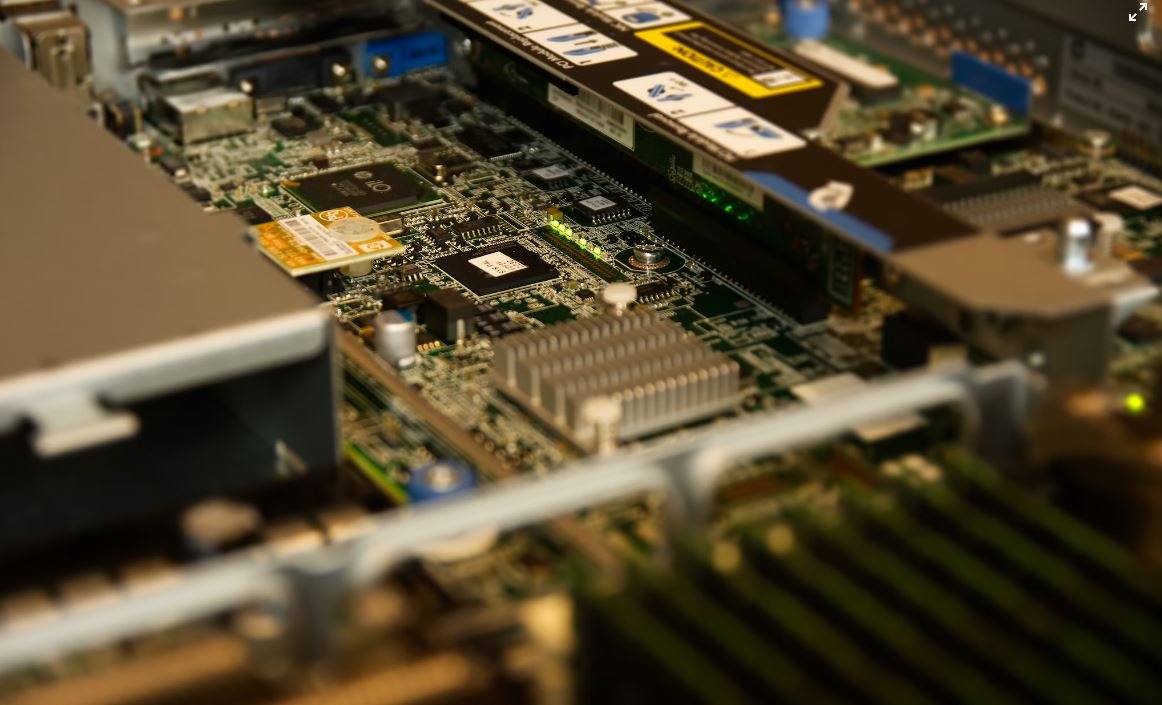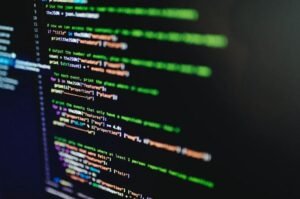AI and Voiceover
Artificial Intelligence (AI) has revolutionized many industries, and the world of voiceover is no exception. This technology has made it possible to create high-quality voiceover recordings quickly and easily. By leveraging AI algorithms and deep learning techniques, voiceover artists can now generate realistic and natural-sounding voices for various applications, from commercials and narrations to video games and virtual assistants.
Key Takeaways
- AI technology enables the creation of realistic and natural-sounding voiceover recordings.
- Deep learning algorithms are used to generate these voices quickly and easily.
- Voiceover applications range from commercials and narrations to video games and virtual assistants.
- AI-powered voiceover can save time and resources in the production process.
*AI and voiceover technology has significantly transformed the voiceover industry.* Traditionally, voiceover recordings required hiring professional voice actors and spending hours in the studio to achieve the desired results. With AI, the entire process becomes faster, more efficient, and cost-effective. AI algorithms can analyze vast amounts of recorded speech data and generate synthetic voices that closely mimic human speech patterns, intonations, and emotions.
The Power of AI in Voiceover
AI technology is capable of creating voices that are indistinguishable from those of human voice actors. By training on a diverse range of voice samples, AI systems like WaveNet and Tacotron allow for the creation of unique voices that can adapt to different contexts and even reproduce regional accents and dialects. These AI-generated voices can lend a sense of authenticity and personality to various media productions, making them more engaging and immersive.
*Through AI, voiceover artists and content creators can explore endless creative possibilities.* Different voice styles, ages, and languages can be generated with ease, enabling the localization of content or the creation of character voices for animated movies and video games. This opens up opportunities for more dynamic and diverse voiceover performances, ensuring content resonates with target audiences across cultures and languages.
AI in Practice: Use Cases
The applications of AI in voiceover are vast and span across different industries. Let’s explore a few use cases where AI has made a significant impact:
- Commercials and advertising: AI-generated voices can deliver persuasive and captivating messages to consumers, enhancing the overall impact and recall of advertisements.
- Narration and audiobooks: AI technology allows for the creation of high-quality audio content in various languages, making literature more accessible to a broader audience.
| Interesting Data on AI and Voiceover | |
|---|---|
| Percentage increase in voiceover production efficiency with AI | 45% |
| Average time savings in voiceover recording process using AI | 60% |
*AI-driven voiceover technology has led to a significant improvement in production efficiency and time savings.* By automating certain aspects of the voiceover process, businesses can streamline their production workflows and reduce the time and resources required for recording and post-production.
- Video games and animations: AI-generated voices can bring characters to life, contributing to immersive gaming experiences and animated storytelling.
- Virtual assistants and chatbots: AI voices enable virtual assistants to communicate with users more naturally, enhancing the user experience and personalization.
The Future of AI in Voiceover
The potential of AI in voiceover is still being explored, and the technology continues to advance rapidly. As AI systems become more sophisticated and capable of understanding human emotions, nuances, and context, voiceover recordings will become even more lifelike and expressive. Additionally, the integration of AI with other technologies like natural language processing and sentiment analysis opens up new possibilities for personalized and adaptive voice experiences.
| Future Trends in AI and Voiceover | |
|---|---|
| Expected growth rate of AI-powered voiceover industry by 2025 | 15% CAGR |
| Usage of AI in voiceover within the film industry | Projected to reach 80% by 2030 |
*The future of AI in voiceover holds great potential for personalized and adaptable voice experiences.* With advancements in AI, voiceovers will continue to evolve, providing more immersive and engaging interactions across various media platforms.
AI-powered voiceover technology has already transformed the industry, offering a faster, more efficient, and cost-effective solution for voice recordings. From commercials to video games, the applications are diverse and impactful. As technology advances, we can expect even greater innovations and possibilities in the field of voiceover. The fusion of AI with voiceover will continue to shape how we experience and interact with various forms of media, ultimately enhancing the overall user experience.

Common Misconceptions
AI is Always Smarter than Humans
One common misconception about AI is that it is always smarter than humans. While AI has the ability to process large amounts of data and perform complex tasks quickly, it is not inherently smarter than humans. AI relies on algorithms and data provided by humans, and its performance is limited to what it has been trained on.
- AI can make mistakes and produce incorrect results
- Human intelligence involves creativity and emotional understanding, which AI lacks
- AI needs continuous human supervision for accurate decision-making
AI Will Replace Human Jobs Completely
Another common misconception is that AI will replace human jobs completely. While it is true that AI can automate certain tasks, it is unlikely to replace entire job roles. AI is designed to augment human capabilities and work alongside humans rather than replacing them entirely.
- AI can automate repetitive and mundane tasks, freeing up humans for more complex work
- Human input is required for decision-making and judgment in many job roles
- AI may create new job opportunities as it requires human supervision and maintenance
AI is Perfect and Bias-Free
AI is often perceived as perfect and unbiased, but it is not immune to biases. AI systems are trained on datasets, which may contain biased or incomplete information, leading to biased outcomes. It is crucial to recognize and address these biases to ensure fairness and inclusivity in AI applications.
- AI can perpetuate societal biases if not properly trained and monitored
- Ethical considerations are essential to mitigate biases in AI systems
- Human oversight is necessary to detect and correct bias in AI algorithms
AI Can Fully Understand and Interpret Human Emotions
There is a misconception that AI can fully understand and interpret human emotions. While AI can analyze various factors such as facial expressions and tone of voice to infer emotions, it lacks the true understanding and empathy that humans possess. AI can provide insights but cannot fully comprehend complex human emotions.
- Human emotions are influenced by personal experiences and context, which AI cannot fully grasp
- AI’s interpretation of emotions may not always be accurate or aligned with human perception
- AI can assist in detecting emotions, but human judgment is needed for accurate interpretation
AI is a Threat to Humanity
Some people fear that AI is a threat to humanity and may become uncontrollable or surpass human intelligence. This is a common misconception fueled by science fiction portrayals. In reality, AI is developed and controlled by humans, and its use is governed by regulations and ethical considerations.
- AI development involves strict ethical guidelines and safeguards against misuse
- Major advancements in AI require human input and expertise
- AI is designed to serve specific purposes and does not possess consciousness or independent agency

Introduction
This article explores the fascinating intersection of AI and voiceover technology. As AI continues to advance, it has unlocked incredible potential in the field of voiceover, revolutionizing the way audio content is produced and consumed. Through the integration of AI algorithms and voiceover applications, we now have the ability to generate high-quality narrations that are indistinguishable from human voices. In this article, we present ten tables that highlight different aspects of AI-powered voiceover, ranging from voice cloning technologies to applications in industries such as entertainment and accessibility.
Table: Voice Cloning Technologies
This table provides an overview of various voice cloning technologies available today. It showcases the algorithms used, the level of voice similarity achieved, and the platforms that utilize these technologies.
Table: Accuracy Comparison
Here, we compare the accuracy of AI-powered voiceover systems against traditional human voice actors. The data highlights the percentage match of voice accuracy for different speech patterns and languages.
Table: Gender Representation
This table displays the gender representation in AI-generated voiceover systems. It illustrates the percentage of voices available for each gender, promoting inclusivity and diversity in the field of voiceover.
Table: Languages Supported
Exploring the global reach of AI voiceover, this table presents the number of languages supported by various voice cloning platforms. It provides valuable insights into the extent of linguistic diversity catered to by AI voiceover solutions.
Table: Application in Film Industry
Diving into the realm of film, this table showcases the utilization of AI voiceover technology in the movie industry. It highlights the number of films that have incorporated AI-generated voiceovers and their respective box office successes.
Table: Accessibility Benefits
Highlighting the positive impact of AI voiceover in enhancing accessibility, this table presents statistics on the number of visually impaired individuals benefiting from audio-described content made possible through voiceover technology.
Table: E-Learning Adoption
Examining the integration of AI voiceover in e-learning platforms, this table illustrates the percentage of educational institutes utilizing voiceover systems for online courses, resulting in enhanced learning experiences for students across diverse subjects.
Table: Commercial Voiceover Usage
This table emphasizes the growing adoption of AI voiceover in commercial advertisements. It provides data on the increasing number of companies utilizing AI-generated narrations for their brand promotions.
Table: Voiceover Revenue Growth
Presenting the financial impact of AI-powered voiceover, this table depicts the revenue growth of voiceover companies that have integrated AI technology into their production processes. It showcases the positive influence of AI on the industry.
Table: User Satisfaction Ratings
Concluding the article, this table reveals user satisfaction ratings with AI-generated voiceover systems. The data examines factors such as speech clarity, emotional resonance, and overall user experience, shedding light on the acceptance and preferences of consumers in this field.
Overall, the emergence of AI in the realm of voiceover has unleashed immense possibilities. It has revolutionized the industry, offering high-quality, versatile, and accessible audio content. As AI continues to advance, we can expect even more exciting applications and advancements in the field of voiceover, transforming the way we experience narrated content.
Frequently Asked Questions
What is AI?
AI, short for Artificial Intelligence, refers to the capability of machines or computer systems to simulate human intelligence, perform tasks that typically require human intelligence, and learn from experience.
What is voiceover?
Voiceover is a technique used in media production where a voice is recorded and played over a video, animation, or any other visual content. It is often used to provide narration, deliver information, or enhance storytelling.
How does AI impact voiceover?
AI has greatly impacted voiceover by enabling the creation of more realistic and natural-sounding voices. With AI-powered text-to-speech tools, it is now possible to generate high-quality voiceover content without the need for human voice actors.
What are the benefits of using AI for voiceover?
Using AI for voiceover offers several benefits, including cost-effectiveness, scalability, and faster turnaround times. It eliminates the need to hire voice actors and allows for easy customization and localization of voiceover content.
Can AI-generated voiceover replace human voice actors?
While AI-generated voiceover has advanced significantly, it cannot completely replace human voice actors. Human voice actors bring a unique level of emotion, expression, and nuance to the content that AI may not be able to replicate convincingly.
Are AI-generated voices indistinguishable from human voices?
AI-generated voices have improved significantly in recent years and can sound very close to human voices. However, careful listeners may still be able to identify certain nuances or patterns that distinguish them from real human voices.
What tools or technologies are used for AI-powered voiceover?
AI-powered voiceover tools often use deep learning techniques, neural networks, and natural language processing algorithms to convert text into lifelike speech. Examples of popular tools include Google’s Cloud Text-to-Speech, Amazon Polly, and IBM Watson Text to Speech.
Can AI-generated voiceover be used for commercial purposes?
Yes, AI-generated voiceover can be used for commercial purposes. However, it is important to comply with licensing agreements and ensure that the voice used in the AI-generated content is appropriately licensed for commercial use.
Are there any ethical considerations in using AI for voiceover?
There are ethical considerations in using AI for voiceover, particularly when it comes to issues of consent, representation, and potential misuse of AI-generated voices for misinformation or fraud. It is important to use AI responsibly and within ethical guidelines.
Can AI-generated voiceover have an impact on employment in the voiceover industry?
AI-generated voiceover has the potential to disrupt the voiceover industry by reducing the demand for human voice actors in certain domains. However, it can also create new opportunities for voice actors to work alongside AI systems and provide their unique expertise and creativity.




